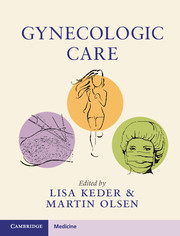Book contents
- Gynecologic Care
- Gynecologic Care
- Copyright page
- Dedication
- Contents
- Contributors
- Preface
- Section 1 Basic Gynecologic Care Issues
- Section 2 Gynecologic Surgery
- Section 3 Infertility
- Section 4 Urogynecology and Pelvic Floor Dysfunction
- Section 5 Gynecologic Oncology
- Section 6 General Considerations
- Index
- References
Section 5 - Gynecologic Oncology
Published online by Cambridge University Press: 01 February 2018
- Gynecologic Care
- Gynecologic Care
- Copyright page
- Dedication
- Contents
- Contributors
- Preface
- Section 1 Basic Gynecologic Care Issues
- Section 2 Gynecologic Surgery
- Section 3 Infertility
- Section 4 Urogynecology and Pelvic Floor Dysfunction
- Section 5 Gynecologic Oncology
- Section 6 General Considerations
- Index
- References
- Type
- Chapter
- Information
- Gynecologic Care , pp. 263 - 370Publisher: Cambridge University PressPrint publication year: 2018

